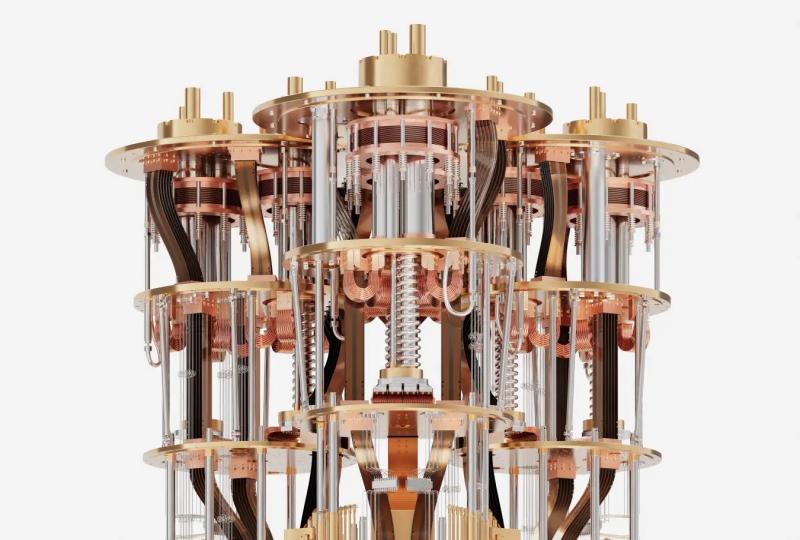SpinQ Joint Team Develops Dual-Capability Machine Learning Models, Published in Physical Review Letters
2025.04.07 · Press Release
Recently, experts from SpinQ, Hong Kong University of Science and Technology, Shenzhen University, and the Quantum Science Center of the Guangdong-Hong Kong-Macao Greater Bay Area jointly published their latest research findings in the prestigious international physics journal, Physical Review Letters (PRL).
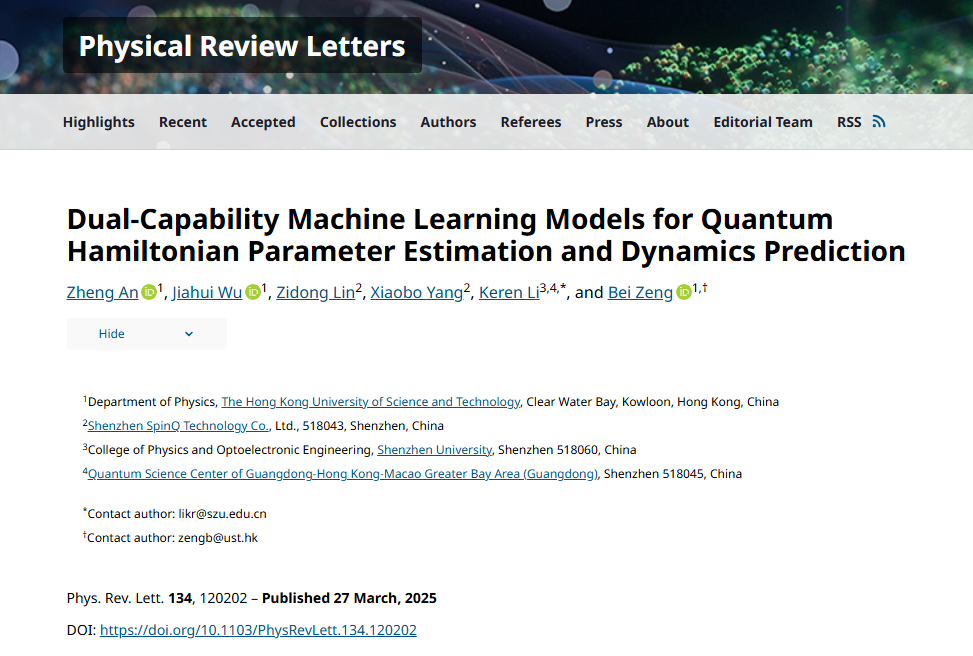
The research team has proposed a machine learning model based on Long Short-Term Memory (LSTM), achieving for the first time a "bidirectional interpretation" between quantum system parameters and their dynamic evolution.
This model can inversely infer Hamiltonian parameters from experimental observation data and simultaneously predict the dynamic behavior of quantum systems based on these parameters. This achievement provides new approaches for quantum hardware calibration, noise characterization, and algorithm optimization. The results have been validated through experiments on different quantum computing platforms.
Physical Review Letters (PRL), the flagship journal of the American Physical Society (APS), is internationally recognized as an authoritative academic journal in physics. It is dedicated to publishing the most influential and transformative research findings in fundamental physics and interdisciplinary frontier areas.
The "Dynamic Black Box" Challenge in Traditional Quantum System Analysis
Rapid advances in quantum hardware and classical computational simulations have significantly improved data accessibility in quantum systems, while simultaneously demanding greater precision in system description and prediction.
However, the intrinsic complexity of quantum systems—such as the exponential scaling of quantum states with system size—and the inverse engineering challenge between Hamiltonian parameters and system dynamics have consistently posed central problems in quantum computing, quantum control, and quantum simulation.
Traditional quantum system analysis faces two primary difficulties: dynamic prediction requires computationally intensive simulations, and parameter inference depends heavily on specially designed experiments. Machine learning, particularly deep learning, has emerged as a valuable new tool for quantum system analysis, benefiting from its strength in managing high-dimensional data and recognizing complex patterns.
Technical Breakthrough: Constructing a "Bidirectional Translator" for Quantum Systems
Against this backdrop, the joint research team has made a significant breakthrough by integrating a Long Short-Term Memory (LSTM) recurrent neural network (RNN) with an encoding network, developing a bidirectional machine-learning framework. This approach realizes, for the first time, a bidirectional mapping between parameters and dynamics ("parameter-dynamics"), providing a versatile analytical framework for quantum systems.
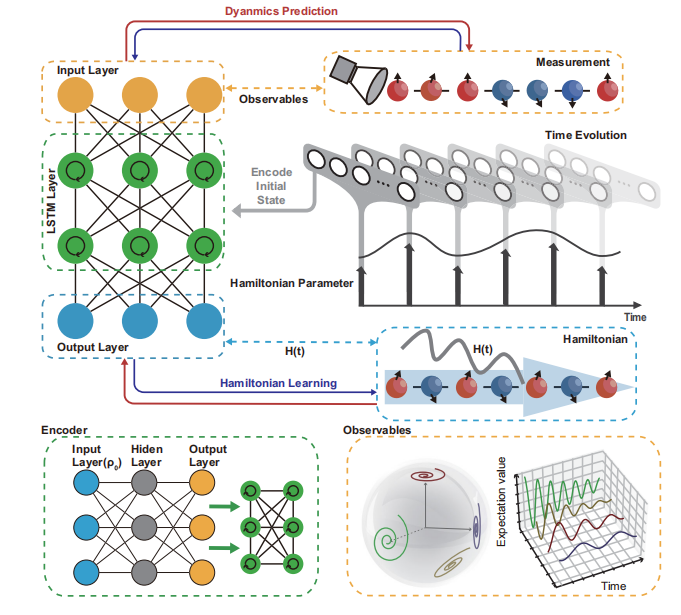
This model takes time-series data of local quantum observables as input to inversely deduce time-varying parameters such as magnetic field strength, achieving an error rate within 1%. Simultaneously, given known parameters, the model can accurately predict the evolution trajectory of quantum states for durations of up to 15 time units.
- Inverse Parameter Estimation: By observing only the temporal evolution of local observables (such as spin momentum), the model inversely infers time-dependent parameters (such as variations of field) in the Hamiltonian.
- Accurate Dynamic Prediction: With input Hamiltonian parameters, the model directly forecasts the evolution trajectory of observables in many-body quantum systems.
Dual-Platform Experimental Validation Confirms Technical Universality
The research team validated the model's applicability through theoretical simulations involving one-dimensional transverse-field Ising models, non-integrable systems, and two-dimensional quantum models. They further conducted experimental validations using SpinQ's proprietary quantum computing platforms: the nuclear magnetic resonance quantum computer "SpinQ Gemini Lab" and the superconducting quantum computer "SpinQ SQC," achieving the following outcomes:
NMR Quantum Computing Platform (2-qubit):
The model's dynamic predictions for two-qubit systems with varying coupling conditions closely matched experimental data, with prediction errors under 1% over a 50 ms timespan.
Superconducting Quantum Chip Platform (20-qubit):
Addressing the frequency detuning issue in superconducting qubits, the model successfully inferred unknown noise parameters (Δ₁, Δ₂) within the Hamiltonian from experimental data, providing a novel approach for hardware calibration.

The successful cross-platform validations demonstrate the technique's strong adaptability to various quantum hardware types and scales, opening possibilities for coordinated optimization across heterogeneous quantum computing ecosystems.
Providing a New Dynamic Monitoring Approach for Quantum Error Correction
Quantum error correction represents a critical challenge for scalable quantum computing. Current mainstream solutions rely on static logical encoding, which struggles to adapt to real-time environmental noise. The dynamic tracking technique proposed by this study offers a novel approach to resolving real-time noise monitoring issues:
- High-Precision Noise Parameter Extraction: In superconducting quantum chip experiments, the model successfully extracted detuning parameters (Δ₁, Δ₂) from gate operation data of a 20-qubit system, achieving inverse inference errors consistently within 1%. This level of precision meets the detection requirements for parameter drift in typical surface-code error correction schemes, which have fault-tolerance thresholds of approximately 1–2%.
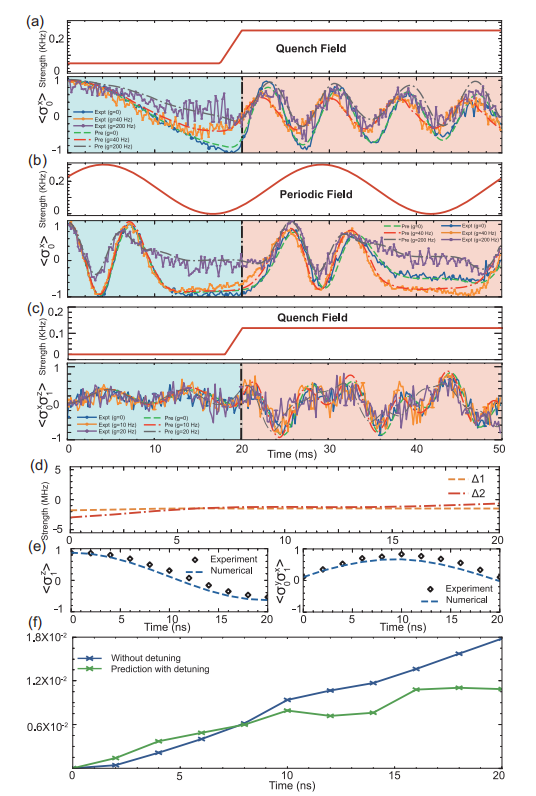
- Dynamic Error Correlation Analysis: By continuously monitoring the temporal evolution of Hamiltonian parameters, the system can establish correlation models that link noise fluctuations to logical error rates. In validation experiments conducted on an NMR platform, dynamic parameter sequences from a two-qubit system (with a 50 ms observation window) successfully predicted Z-direction decoherence caused by abnormal fluctuations in the coupling strength B(t), achieving a high correlation between predicted and measured data (R² = 0.97).
- Scalability Verification: Simulation tests demonstrated that when scaling the system from 5 qubits to 11 qubits, the computation time for inverse parameter estimation increased by only 1.8 times. In contrast, traditional linear algebra methods experienced more than a five-fold increase. This sub-linear complexity indicates strong potential for real-time monitoring of large-scale quantum systems.
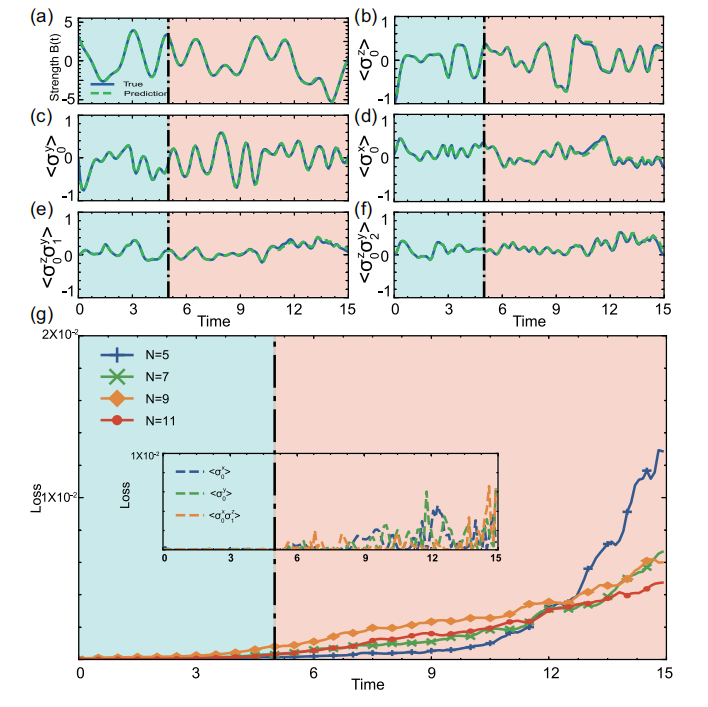
In the future, SpinQ will continue to pursue a core strategy driven by "technology R&D and commercial implementation," committed to deeply integrating cutting-edge quantum computing research into its full-stack technological infrastructure and business ecosystem.
SpinQ aims to transform quantum technology into an accessible tool that genuinely drives industrial upgrade, partnering with global collaborators to pioneer a new paradigm in quantum computing-enabled industries.
Link to the paper: https://journals.aps.org/prl/abstract/10.1103/PhysRevLett.134.120202
Featured Content



